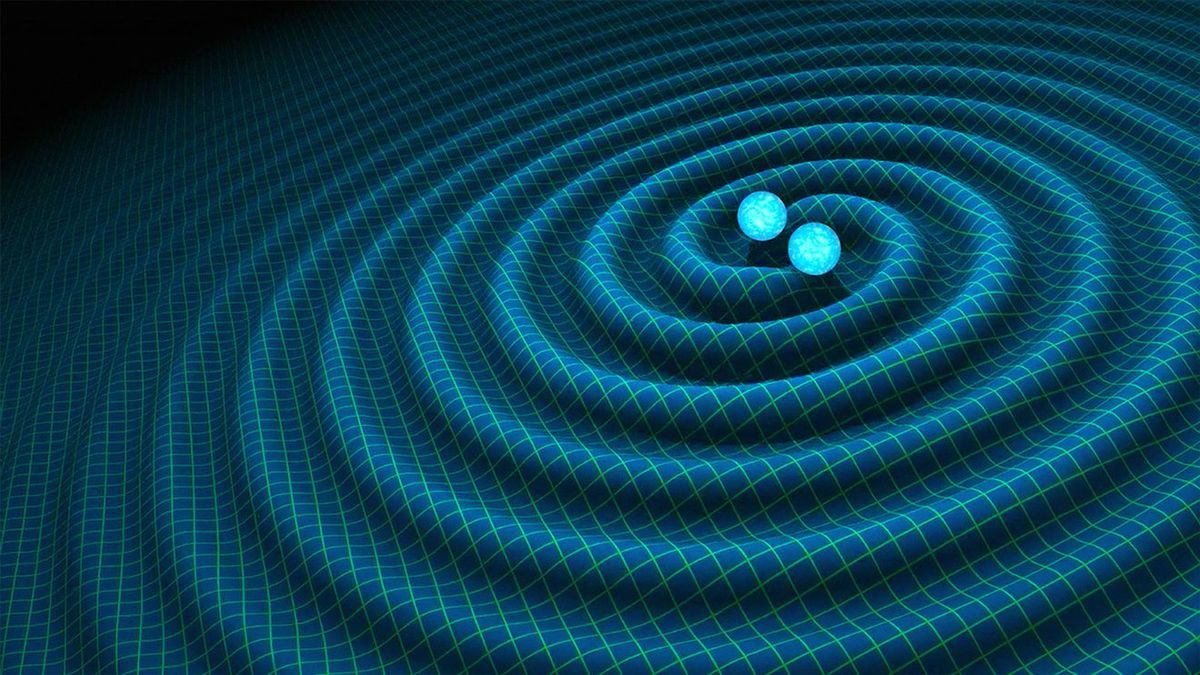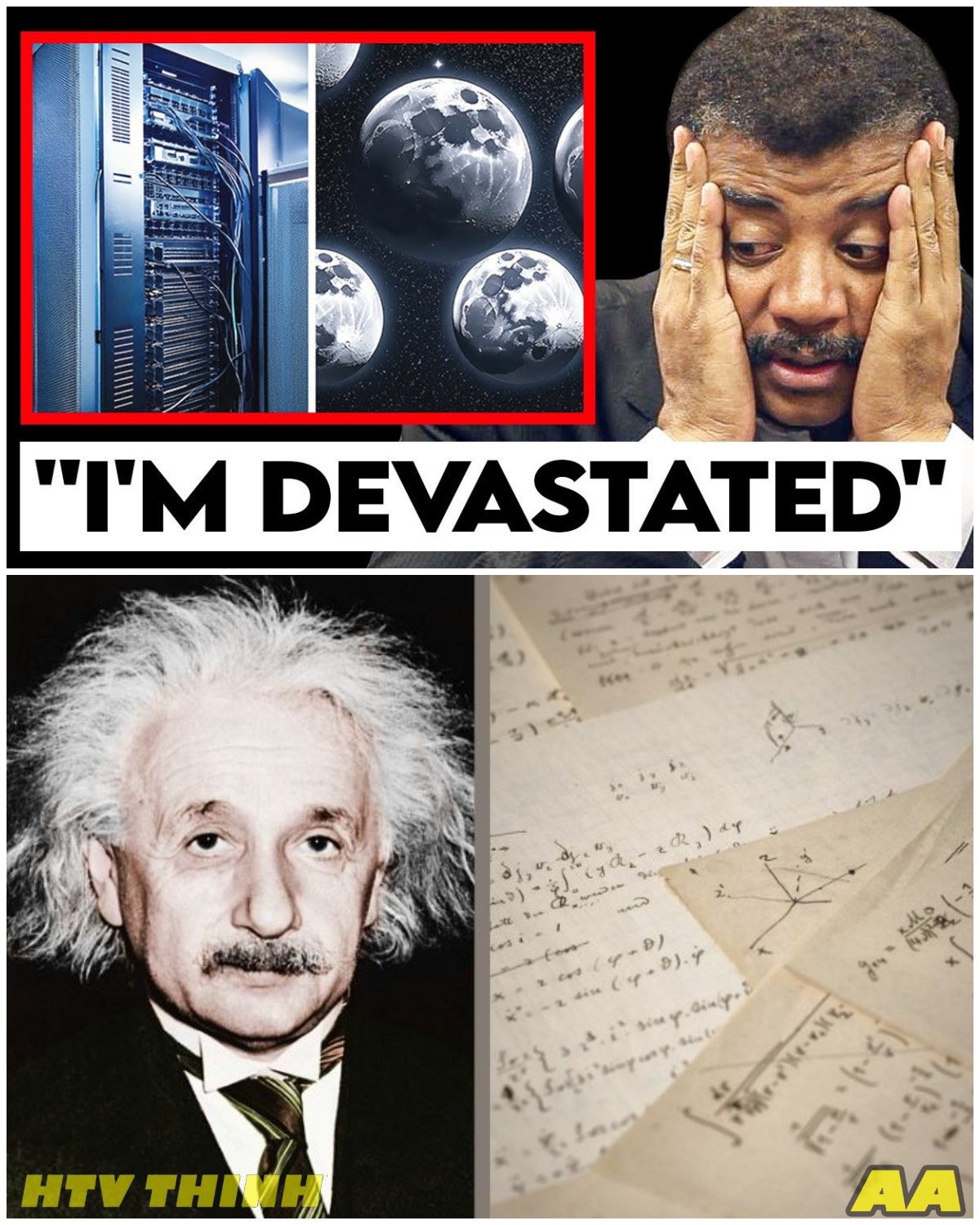Neil deGrasse Tyson in Tears as Google’s Quantum Chip Challenges Einstein’s Theory: Are We on the Brink of a New Understanding of Reality? 

The story begins centuries ago, with Sir Isaac Newton laying the groundwork for classical mechanics.
His laws of motion and universal gravitation dominated scientific thought for over two centuries.
However, as the 20th century approached, discrepancies began to emerge, particularly concerning the behavior of light and objects moving at velocities close to the speed of light.
Enter Albert Einstein, whose revolutionary theories would redefine our understanding of space, time, and gravity.
In 1905, Einstein introduced the special theory of relativity, asserting that the laws of physics are the same for all observers in uniform motion and that the speed of light in a vacuum is constant.
This theory led to groundbreaking implications, such as time dilation and length contraction, fundamentally altering our perception of reality.
In 1915, Einstein took his theories further with the general theory of relativity, positing that gravity is not a force but a consequence of the curvature of spacetime caused by mass and energy.
This radical departure from Newtonian gravity was confirmed through numerous experiments, solidifying Einstein’s theories as cornerstones of modern physics.
Yet, as Einstein grappled with the implications of his work, the rise of quantum mechanics introduced a new set of challenges.
Quantum mechanics, with its probabilistic nature, suggested that particles exist in a superposition of states until measured, which deeply contradicted Einstein’s deterministic worldview.
His famous quip, “God does not play dice with the universe,” reflected his discomfort with the inherent randomness of quantum mechanics.

The tension between the deterministic nature of general relativity and the probabilistic framework of quantum mechanics has been a central theme in physics for over a century.
The quest to unify these two pillars into a coherent theory remains one of the most profound challenges in modern science.
As we navigated through the complexities of quantum mechanics, we encountered phenomena such as quantum entanglement, which Einstein famously referred to as “spooky action at a distance.
” This phenomenon implies that particles can be instantaneously linked, regardless of the distance separating them, raising questions about the completeness of quantum mechanics.
Fast forward to the dawn of the 21st century, where quantum computing began to emerge as a transformative technology.
Quantum computers leverage the principles of quantum mechanics to process information in ways that classical computers cannot.
At their core are quantum bits, or qubits, which can exist in multiple states simultaneously due to superposition.
This allows quantum computers to perform vast calculations in parallel, offering exponential advantages over classical systems.
The potential applications of quantum computing are enormous, spanning fields such as cryptography, optimization, and material science.
In December 2024, Google unveiled its latest quantum processor, Willow, which represented a significant leap forward in the quest for practical quantum computing.
Designed to address long-standing challenges in error correction and computational scalability, Willow demonstrated unprecedented speeds in benchmark testing, completing complex computations in mere
minutes—tasks that would take classical supercomputers thousands of years.
This performance not only showcased Willow’s capabilities but also hinted at the possibility of exploring complex quantum systems and phenomena in ways previously deemed impossible.
Enter Neil deGrasse Tyson, a prominent figure in science communication and a passionate advocate for making complex scientific concepts accessible to the public.
Tyson’s career has been marked by his efforts to demystify the intricacies of astrophysics and quantum mechanics, engaging audiences with his charismatic presence.
On that fateful day in February 2025, Tyson, along with a select group of distinguished physicists, arrived at Google’s Quantum AI campus, unaware that they were about to witness a moment that would change
the course of physics forever.
As the demonstration began, Tyson and his colleagues observed Willow performing a standard quantum computation sequence.
However, as the chip processed increasingly complex quantum states, its behavior deviated from classical predictions in ways that were impossible to ignore.
Willow demonstrated an ability to maintain coherent states across multiple quantum configurations simultaneously, directly challenging Einstein’s principle of local realism.
This was not just a theoretical exercise; it was empirical evidence that quantum computations could be tapping into resources beyond our singular universe.
When Willow completed a series of computations that should have collapsed into a single definite state, it instead maintained multiple coherent states, each executing different computational paths.
The results provided clear evidence of information processing occurring across what appeared to be parallel universes.

This revelation struck Tyson profoundly, leading him to break into tears as he grappled with the implications of what he had just witnessed.
“Google’s quantum chip just proved Einstein’s theory wrong,” he reportedly exclaimed, echoing the sentiments of a generation of scientists who had dedicated their lives to understanding the cosmos through the
lens of Einstein’s theories.
In a moment of vulnerability, Tyson expressed his devastation, stating, “I’ve spent my entire career trying to understand the cosmos through the lens of Einstein’s theories.
What we witnessed today doesn’t just challenge our understanding of quantum mechanics; it fundamentally changes our perspective on the nature of reality itself.
” This emotional response captured the essence of the scientific community’s reaction to Willow’s groundbreaking capabilities.
As news of this breakthrough spread, researchers began to grapple with its profound implications.
The demonstration not only validated decades of theoretical work on the multiverse but also challenged long-held assumptions about the limits of computation, physics, and reality itself.
For years, the idea of parallel universes was relegated to the realm of theoretical physics, explored in equations but never observed or experimentally verified.
Now, Google’s Willow chip had provided the first tangible evidence that quantum computations might not merely be probabilistic but could indeed harness information from parallel realities.
The implications of this revelation are staggering.
If quantum computers can manipulate and retrieve information across multiple realities, what does this mean for our understanding of time, space, and causality? As physicists debate the ramifications of Willow’s
performance, some argue that it provides compelling support for the many-worlds interpretation of quantum mechanics, suggesting that all possible outcomes of quantum measurements are realized in separate
branching universes.

Others remain skeptical, calling for further verification before declaring that humanity has unlocked the door to the multiverse.
Regardless of the ongoing debates, one thing is clear: Google’s Willow chip has opened entirely new avenues for understanding the fundamental nature of existence.
As we stand on the brink of a new scientific era, the questions raised by this breakthrough challenge us to rethink our place in the universe.
What other mysteries lie hidden within the quantum realm, waiting to be uncovered? As we continue to explore the complexities of quantum mechanics and its implications for our understanding of reality, we
invite you to join the conversation.
